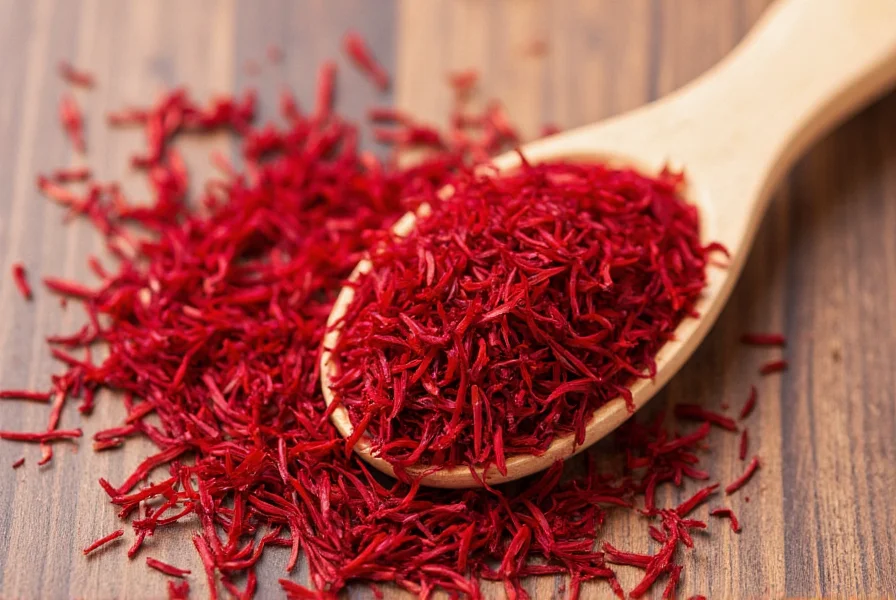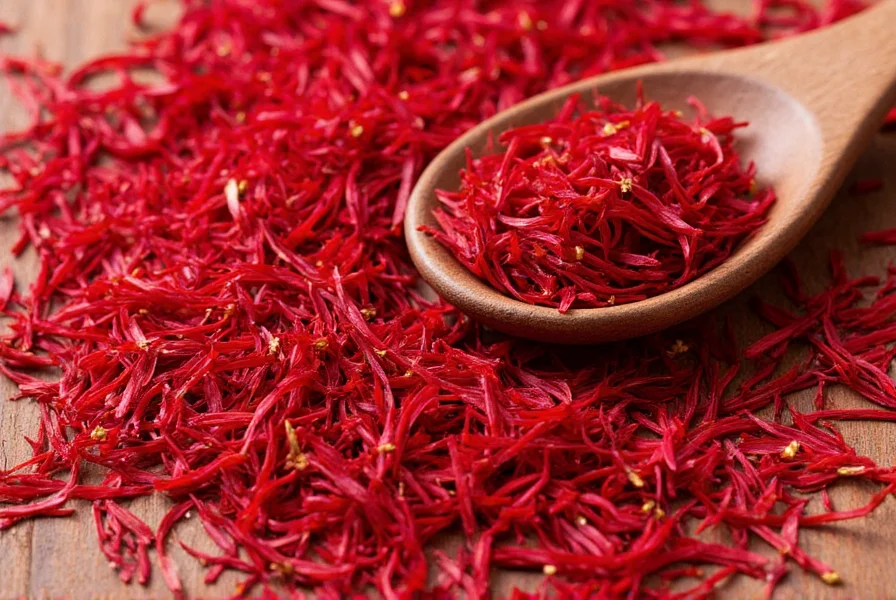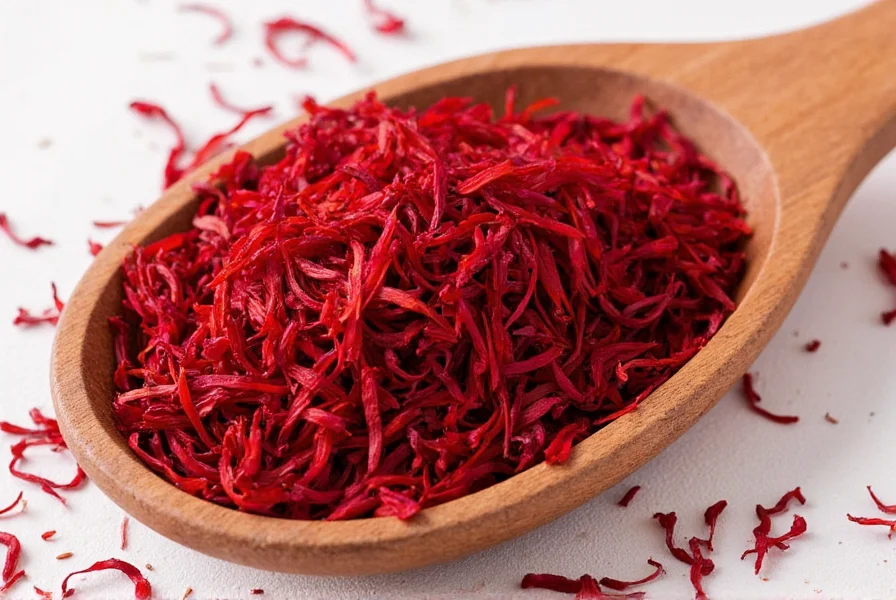Saffron, the world's most expensive spice, has transcended its culinary roots to become a promising natural supplement. While traditionally used in Persian and Ayurvedic medicine, modern research has validated several health benefits of saffron supplements, particularly for mental wellness and visual health. This comprehensive review examines the scientific evidence behind saffron supplement benefits, separating established facts from emerging research.
The Science Behind Saffron Supplements
Saffron supplements contain concentrated extracts from the dried stigmas of Crocus sativus flowers. The primary bioactive compounds—crocin, crocetin, and safranal—contribute to saffron's distinctive color, flavor, and therapeutic properties. Unlike culinary saffron where you'd need impractical amounts (5-10 grams daily) to achieve therapeutic effects, standardized supplements deliver concentrated doses with consistent potency.

Evidence-Based Saffron Supplement Benefits
Mood Enhancement and Depression Management
Among the most well-documented saffron supplement benefits is its effect on mood disorders. Multiple randomized controlled trials demonstrate that 30 mg daily of saffron extract significantly reduces symptoms of mild-to-moderate depression. A 2020 meta-analysis in Phytotherapy Research concluded saffron outperformed placebo and matched conventional antidepressants like fluoxetine and imipramine for short-term treatment, with fewer reported side effects.
The mechanism appears multifaceted: safranal modulates serotonin and dopamine pathways, while crocin inhibits reuptake of these neurotransmitters. This dual-action approach makes saffron particularly interesting for saffron supplement benefits for depression without the sexual dysfunction common with SSRIs.
Age-Related Macular Degeneration Support
Saffron's potent antioxidant properties show promise for eye health. Research published in Investigative Ophthalmology & Visual Science found that 20 mg daily of saffron extract improved retinal function in patients with early age-related macular degeneration (AMD). The carotenoids in saffron—particularly crocin—accumulate in retinal tissue, protecting photoreceptors from oxidative damage and improving blood flow to the retina.
| Condition | Effective Dosage | Time to Noticeable Effects | Research Status |
|---|---|---|---|
| Mild-to-moderate depression | 30 mg daily | 6-8 weeks | Strong clinical evidence |
| Age-related macular degeneration | 20 mg daily | 3 months | Promising early research |
| Appetite control | 17.5 mg twice daily | 8 weeks | Moderate evidence |
Appetite Control and Weight Management
Emerging research suggests saffron supplements may help with weight management through appetite regulation. A study in Nutrition Research found participants taking 17.5 mg of saffron extract twice daily reported reduced snacking frequency and lower hunger levels compared to placebo. Researchers believe saffron's mood-enhancing effects reduce emotional eating, while crocin may influence serotonin pathways related to satiety.
Promising Areas of Ongoing Research
Premenstrual Syndrome Relief
Preliminary studies indicate saffron may alleviate PMS symptoms. In a randomized trial, women taking 30 mg daily of saffron extract experienced significant reductions in irritability, mood swings, and physical symptoms compared to placebo. The effect appears linked to saffron's modulation of serotonin activity during the luteal phase.
Cognitive Function Support
Early research suggests saffron's antioxidant properties may protect against cognitive decline. Animal studies show crocin reduces amyloid plaque formation, while human trials indicate potential improvements in memory and attention. However, more extensive human studies are needed before saffron supplement benefits for cognitive health can be definitively established.
Safety, Dosage, and Quality Considerations
Saffron supplements are generally well-tolerated at recommended doses (15-30 mg daily of standardized extract). Mild side effects may include dry mouth, anxiety, or drowsiness. Crucially, doses exceeding 1.5 grams can be toxic, though quality supplements prevent this risk through standardized dosing.
When selecting a saffron supplement, look for products standardizing to at least 2% safranal and 1.8% crocin. These markers ensure sufficient concentration of active compounds. Avoid products making exaggerated claims like "cures depression"—reputable saffron supplements position themselves as complementary approaches within a comprehensive wellness strategy.

Realistic Expectations for Saffron Supplement Benefits
While research on saffron supplement benefits is promising, consumers should maintain realistic expectations. Saffron works gradually—most studies show effects emerging after 4-8 weeks of consistent use. It's not a replacement for professional mental health care in moderate-to-severe depression, but may serve as a valuable complementary approach. The best results occur when saffron supplementation is part of a holistic wellness plan including proper nutrition, exercise, and stress management.
Frequently Asked Questions
How long does it take for saffron supplements to work for depression?
Most clinical studies show noticeable improvements in mood symptoms within 6-8 weeks of consistent daily use at 30 mg dosage. Some users report subtle effects within 2-3 weeks, but full benefits typically require the complete 8-week period observed in research trials.
What's the difference between saffron supplements and culinary saffron?
Culinary saffron contains the same compounds but in much lower concentrations. You'd need to consume 5-10 grams daily (impractical and expensive) to achieve therapeutic effects. Supplements provide standardized extracts with verified concentrations of active compounds like crocin and safranal, typically 15-30 mg daily of the extract versus grams needed from the spice itself.
Can saffron supplements interact with medications?
Yes, saffron may interact with antidepressants (particularly SSRIs and MAOIs) due to its serotonin-modulating effects, potentially causing serotonin syndrome. It may also enhance blood-thinning medications. Always consult your healthcare provider before combining saffron supplements with prescription medications, especially for depression, anxiety, or blood disorders.
Are saffron supplements safe for long-term use?
Current research suggests saffron supplements are safe for continuous use up to 12 weeks. Limited data exists on longer-term use beyond 6 months. Most studies use 15-30 mg daily of standardized extract, which appears well-tolerated. For extended use beyond 3 months, periodic breaks or medical supervision are advisable.
What should I look for in a quality saffron supplement?
Choose supplements standardizing to at least 2% safranal and 1.8% crocin, the primary active compounds. Look for third-party testing verification (USP, NSF, or ConsumerLab), transparent sourcing information, and avoidance of unnecessary fillers. The best saffron extract supplements provide batch-specific analysis showing actual compound concentrations.











 浙公网安备
33010002000092号
浙公网安备
33010002000092号 浙B2-20120091-4
浙B2-20120091-4